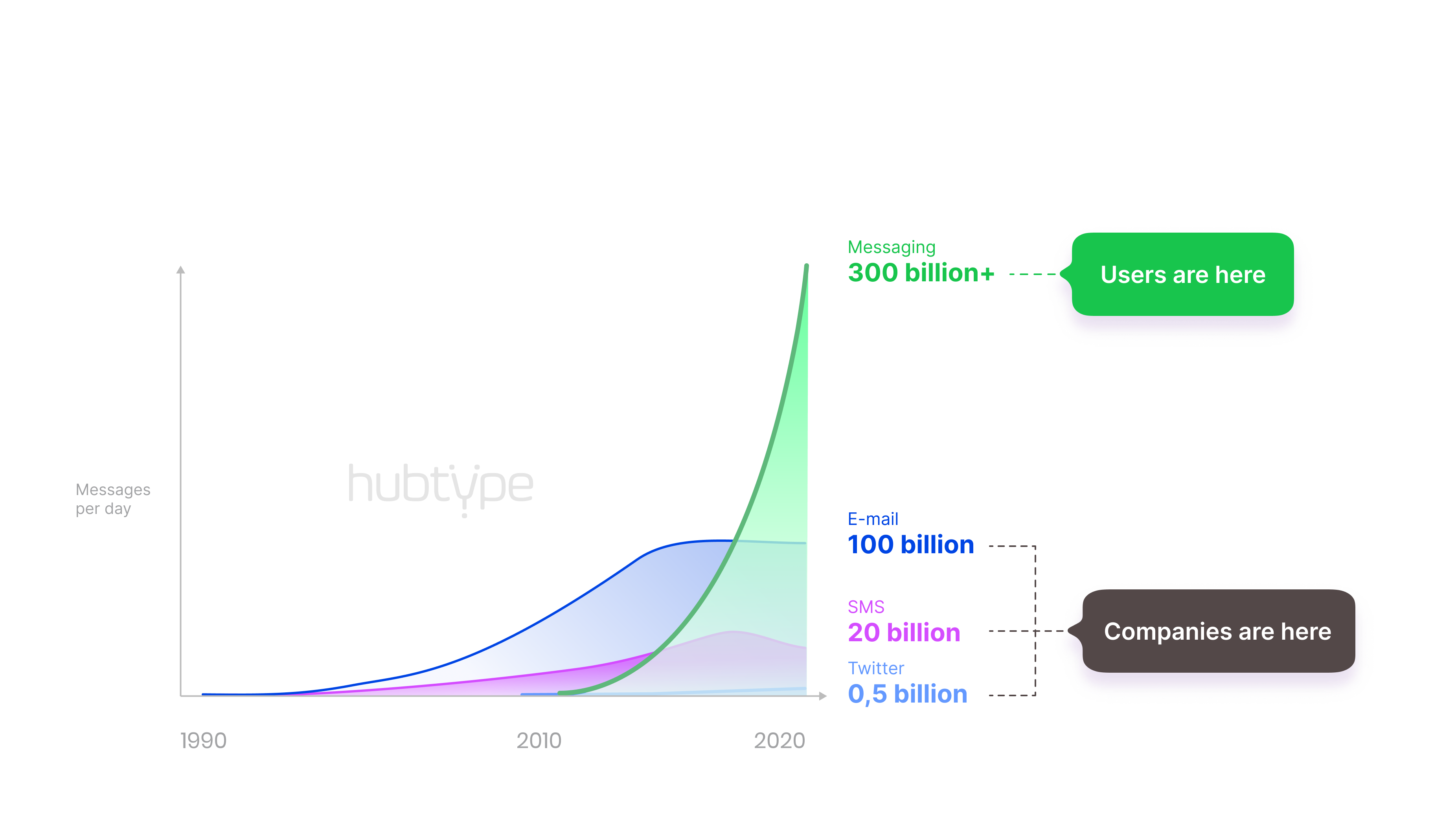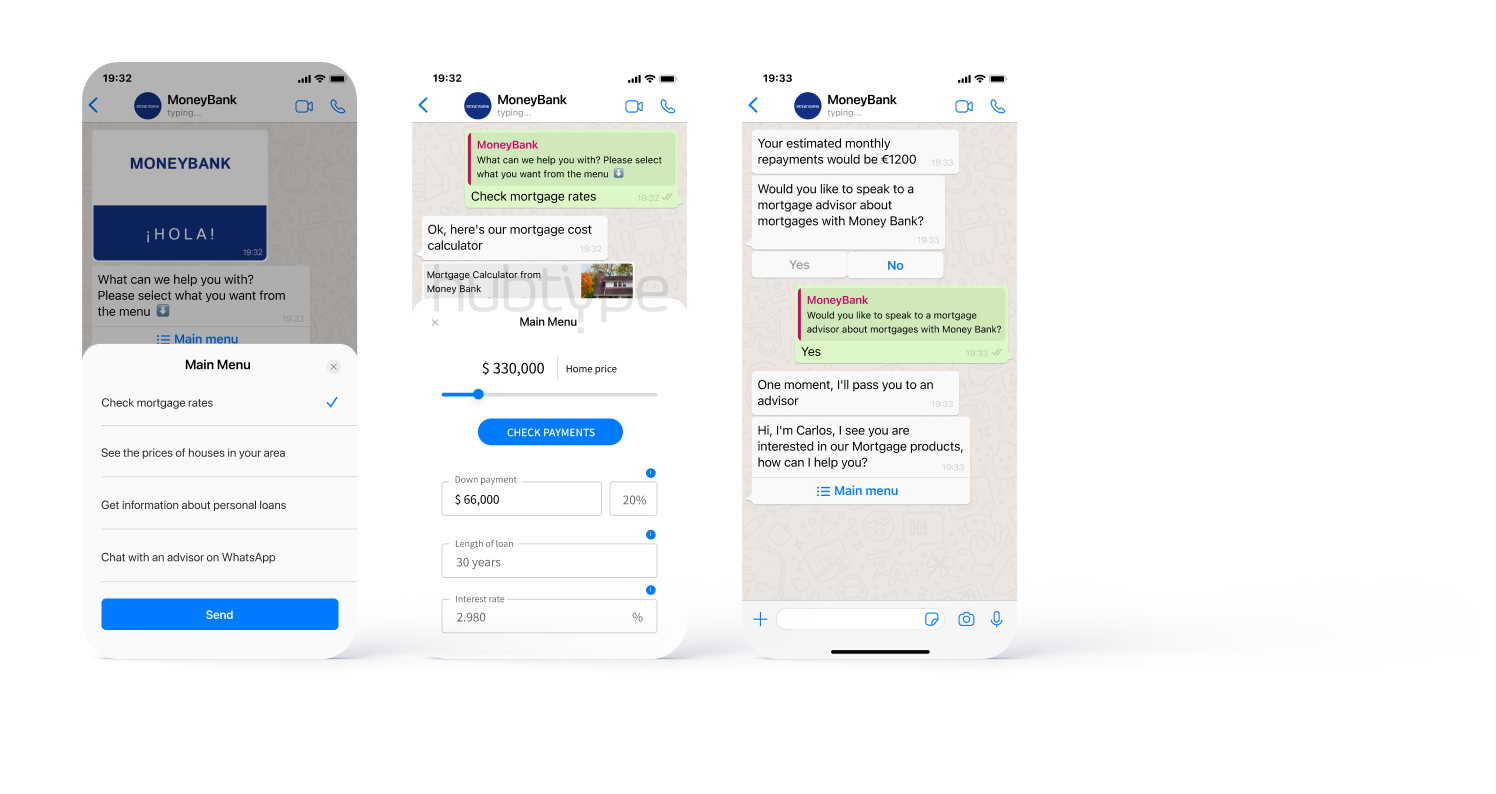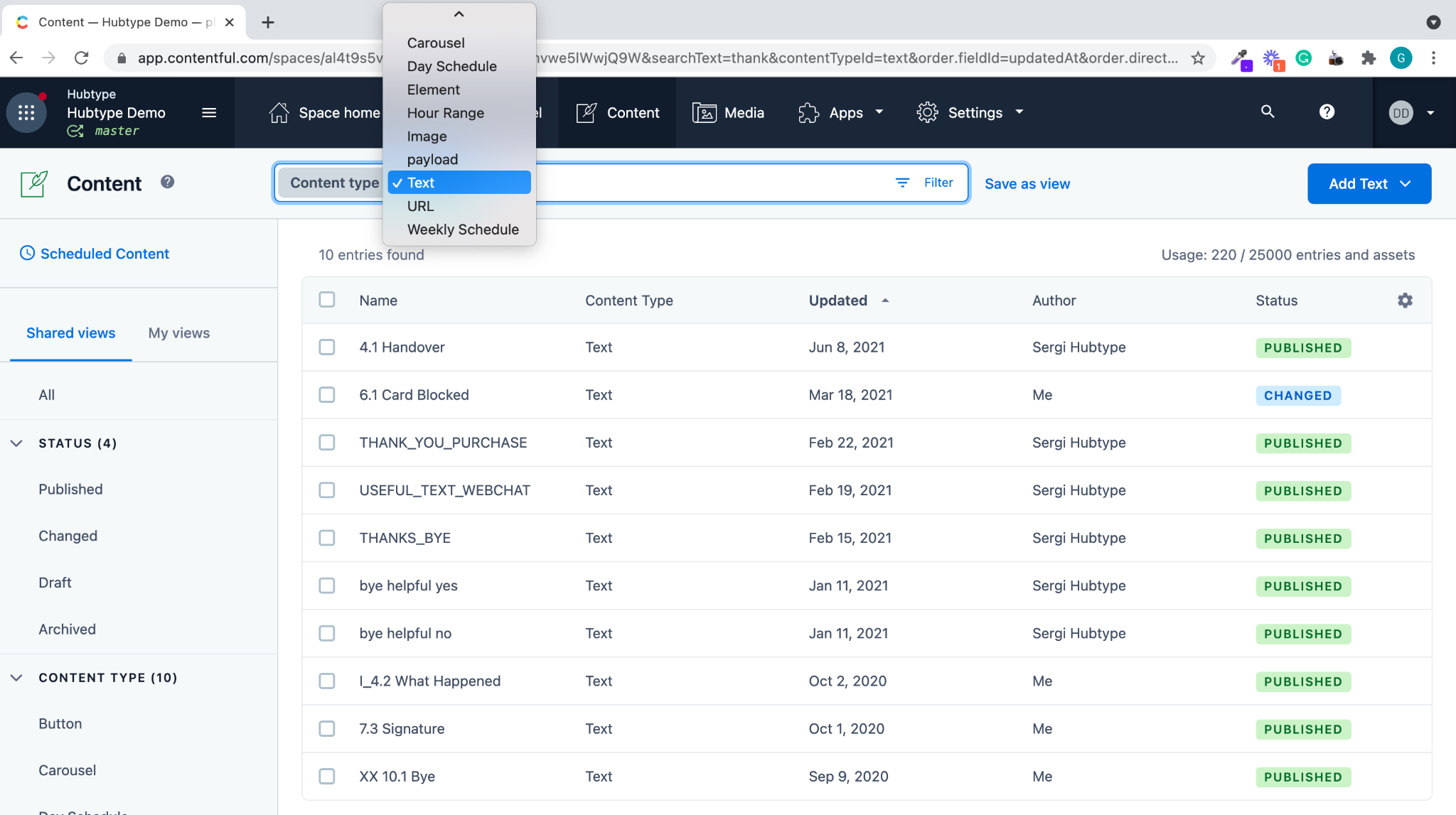How conversational apps are shaping the future of customer interactions

Conversational apps are ideal for customer communication because they combine the best of text, graphic, voice and touch interfaces. Businesses and customers can communicate with text messages, photos, voice memos, buttons, carousel images and much more.
Soon, these experiences won’t be revolutionary — they will be the norm. Messaging apps are on track to rival web browsers in being the main point of contact between brands and their customers and companies need to start adapting.
The next generation of conversational technology
Conversational apps are the next generation of conversational technology. Remember when websites were just made out of texts and hyperlinks? The exact same evolution is happening with chatbots, they are evolving into conversational apps.
Currently, chatbots are mostly made up of text and some interactive elements running on messaging apps. But Conversational apps go beyond that, adding graphical elements, interactive web tools and more.

So what is a conversational app exactly?
Conversational apps are a set of tools created to deliver a range of user experiences. But rather than living as a standalone app on your phone, conversational apps tend to operate within messaging channels like WhatsApp, Messenger and Telegram. These apps allow brands to deliver website-like experiences within a messenger, blending visual content with two-way dialogue.
Conversational apps use channel-specific features (like buttons), integrate with website tools (like user login), and use small, standalone bits of code called components. These UI components and features come together to create a seamless customer experience. The potential for these apps is huge, as embedded components are not limited to what is currently available; much like a website, companies can render any graphical element they need.
Conversational apps combine the best of all user interfaces (including graphical, text, touch and voice). Conversations with customers can include attachments, carousels, buttons and other embedded elements that enable transactions to be completed without needing to leave the messaging app.
Some of the main benefits of conversational apps include:
Helping to bridge the communication gap between customers and brands
Reducing friction in the customer experience
Enabling omnichannel experiences
Allowing businesses to scale with automation
Personalizing experiences
Helping break down silos between marketing, sales and customer service teams
Messaging apps will become the browser and conversational apps the website
So in the near future, we'll have mini-websites (or mini-programs) operating within messaging apps, much like what we are already seeing in WeChat. Messaging apps (like WhatsApp, Messenger or Telegram) will become the new browsers (like Chrome, Mozilla and Internet Explorer). The software within these messaging apps will be conversational apps. In the case of WeChat, within the messenger you can search your contacts to find a brand’s in-messenger app. From here, you can speak with customer service, browse goods, make purchases and more. So, the app acts like the website and the messenger the browser.
This shift from website to messaging apps is due to several factors.
1. The rise of conversational commerce
Today, messenger apps have transformed the way we communicate. Instant communication and connection have become a way of life. We send GIFs, photos, messages, stickers and much more to friends and family without a second thought.

So it's no surprise that people want to communicate with brands in the same way they communicate with friends and family. Most people would rather send a message than be kept on hold. Customers appreciate the immediacy of messaging, as well as the asynchronous nature of it because it allows them to come back to it whenever they have time.
But customers aren't the only ones that prefer messaging. Businesses are finding that meeting customers on messaging apps makes them more efficient. It decreases operational costs while making customers happier.
On top of that, the combination of automation and messaging makes it possible for businesses to scale relevant and personalized conversations. They can use automation purposefully, instead of relying on simple automation. Unlike interactive voice response (IVR) or early chatbots, automation is finally at a place where it improves experiences and adds value to use cases.
Alongside the growth of business-to-customer communication has been the growth of transactional operations within these channels. Now, we can make payments, modify information and place orders -— all through messaging apps.
2. Tolerance to friction is low
Customer expectations are a major driving force behind this paradigm shift. Thanks to businesses like Amazon, Netflix and Uber, our tolerance for friction is at an all-time low. On-demand movies, same-day delivery and other services have led to a culture of instant gratification.
Over time, it's become clear that the brands with the least amount of friction win. Brands that are dedicated to customer experience have more loyal customers. Those customers spend more and share their experiences with friends. As a result, these brands have better reputations, spend less on customer acquisition and are generally more profitable.
And as more brands embrace conversational commerce, what we consider "friction" is changing fast. At one point, it was a novelty for a brand to have a website and a mobile app. These days, if the shopping cart isn't synchronized across a website and mobile app, we consider that friction.
This increasing intolerance for friction is also evident as we look at the decline in branded apps. Today, there's an app for everything from turning on the lights to warming a coffee mug. But, people are tired of downloading apps for some marginal level of convenience.
People would much prefer that brands meet them on the apps they already use. In fact, Gartner predicts that by 2025, 80% of customer service organizations will have abandoned native mobile apps in favor of messaging for a better customer experience.
3. UX of messaging apps are evolving
The user experiences on messaging apps get better every day. Facebook, Apple and Google are all in a race to be the next WeChat. They know that messaging apps are more than just a communication tool, they are the future of commerce, payments and business in general.
For that reason, they are all working quickly to expand their business messaging capabilities and features, which is accelerating the adoption of messaging channels. Businesses now have the freedom and flexibility to design their own experiences within their messaging platforms. They can also integrate with the CRMs and tools that they need to be effective.

As messaging companies release more rich elements and features, it's clear that their roadmaps are focused on improving customer experience within their platforms. For businesses, that means they are able to create a more seamless customer journey. They can treat each interaction as a mini use case, reducing the steps it takes to get from point A to point B.
4. API ecosystem is making innovation more accessible
Messaging service providers are making it easier for businesses to use their services. Most now offer businesses access to application programming interfaces (APIs) that make their channels ideal for customer communication.
WhatsApp, for example, offers access to its API through a select number of business solution providers. These business solution providers, like us at Hubtype, help brands turn messaging interfaces into robust conversational platforms.
At Hubtype, we help brands build conversational applications on top of messaging experiences. This often includes connecting to internal customer data, content, help desks and key software in their tech stack.
Messaging apps have become a home for innovative customer experiences that are capable of meeting the high expectations of today’s customers.
How Hubtype uses Contentful
Hubtype customers serving content as part of their conversational apps do this via a Contentful plugin. Contentful makes it possible for our clients to adapt to new content challenges. It helps them easily create and manage more experiences and deliver them to more places. We chose Contentful because its features and technology make it possible for customers to create an endless variety of customer experiences through our conversational apps.
Contentful’s content platform separates back-end content functions (like creation, management and storage) from front-end functions (like presentation and delivery). This gives our clients more freedom to manage conversational experiences without relying on a developer to implement content changes.
Contentful is key to some customers’ entire content delivery and is the main platform they access within Hubtype. Using Contentful they are able to create and deliver all the content required for their conversational experiences. The platform’s flexibility allows us to seamlessly integrate with our AI functions as well.

In addition to this, Contentful’s language tags allow us to integrate with our multi-language Natural Language Understanding (NLU) extremely easily. In short, Contentful is the content platform that makes it possible to deliver the next-level of chatbot technology. We also offer analytics plugins depending on the business needs and use cases, and the Contentful API allows us to integrate with these without problems.
At Hubtype, we help brands build conversational applications on top of messaging experiences, transforming their messaging interfaces into robust conversational platforms.



